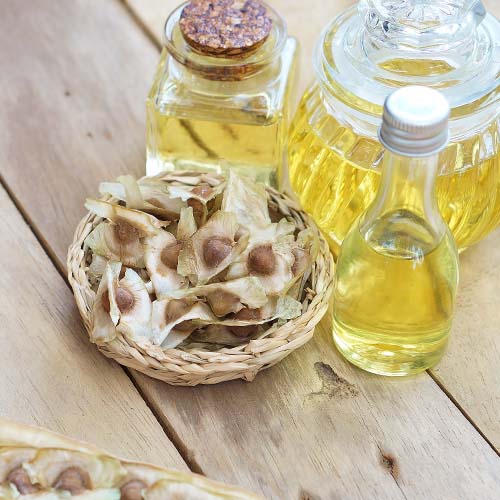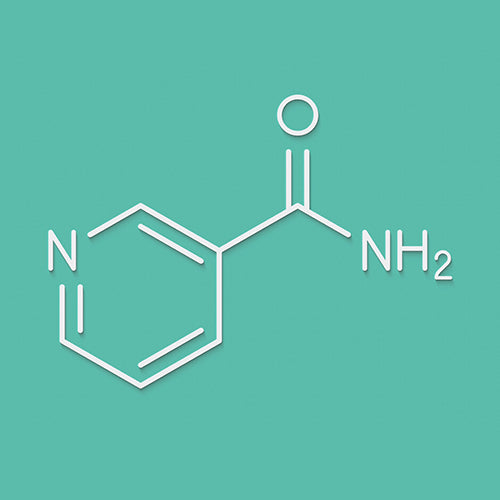If you are at all familiar with the world of skincare, hyaluronic acid (HA) is likely an ingredient you have come across before. But what is it, and what does it do that has made it a skincare staple for so many?
Hyaluronic acid, sometimes known as sodium hyaluronate or hyaluronan, is a humectant. “What is a humectant,” you ask? Essentially, a humectant is a substance which draws water to itself from the environment around it. In the beauty world, humectants are widely found in moisturisers, conditioners, and pretty much everything that has a "hydrating" claim to it. Common humectants in personal care products include glycerine, panthenol (vitamin B5) and – you guessed it - hyaluronic acid.

Hyaluronic acid is a naturally occurring compound that is actually a component of most living cells. It is a major constituent of synovial fluid (which is what cushions joints), cartilage, eyes, and is present in the stratum corneum (outermost layer) of the skin. It is considered a key player in the tissue regeneration process of wound healing1 and is greatly valued in the biomedical field.
Fun fact: the dermal fillers used in cosmetic surgical procedures is usually an injectable form of hyaluronic acid!
A typical adult human body contains approximately 15g of hyaluronic acid, and as much as a third of that is broken down and replaced daily. The amount of hyaluronic acid naturally present in the skin depletes with age, and this is suspected to contribute to the appearance of fine lines and wrinkles as skin matures.
What does it do? And how do moisturisers work?
Before we dive into the wonders of this mighty little compound, let’s talk a bit about what makes a moisturiser work. There is only one way to hydrate skin and that is with water. Occlusives and emollients such as oils, silicones and waxes form protective barriers on the skin that are great at sealing in water and preventing trans-epidermal water loss (TEWL), but for them to be effective there already needs to be moisture present in the epidermis. That’s where humectants help.
Where applied to the skin, hyaluronic acid is able to absorb water from the surrounding environment and draw it to itself. Hyaluronic acid is exceptionally hygroscopic (moisture-absorbent) and is capable of holding up to 1000 times its weight in water! That’s a much-needed drink for dehydrated skin. Because of this affinity for water, it's highly recommended you use products containing HA on damp skin.
Hyaluronic acid swells on contact with water (it makes for a fun, albeit expensive, science experiment), and it is this mechanism which is believed to offer it a plumping effect on surface layers of the skin. The result? Minimised fine lines and a smoother, dewier, and healthy-looking complexion.
The wonderful thing about hyaluronic acid in moisturisers is that it leaves skin looking and feeling hydrated even without the weight of heavier oils and waxes, but still pairs beautifully with the latter to offer more hydration depending on the skin’s needs. This makes it fantastic for all skin types.
How do I use it?
Hyaluronic acid is a safe, stable and effective ingredient to incorporate into your skincare routine. It is commonly available now (for good reasons) and the abundance of choices can be overwhelming, so here are some things to look out for when shopping for your next hyaluronic-infused skincare purchase:
- Because of how it works, hyaluronic acid is best used in leave-on products and is, quite frankly, wasted in rinse-off products such as cleansers. Instead, reach for serums and moisturisers that remain on the skin to allow it time to draw and retain all that marvellous moisture to it.
- The hyaluronic acid used in skincare is a fairly large molecule, so to improve its ability to penetrate and hence bring moisture deeper into the skin, look out for formulations which also contain penetration-enhancing compounds such as jojoba oil.
- Look for products which contain other complementary ingredients: humectants like glycerine and panthenol, as well as water! Most moisturisers should contain water as this is truly what makes a product hydrating (water needs to be present for humectants to work). Even our solid moisturisers, The Perfector and Quench, are emulsions which contain water to ensure they are super hydrating. Typical liquid or cream moisturisers contain 50-80% water, whilst our solid moisturisers contain around 20-25%.
You can find hyaluronic acid in both our face moisturisers: the well-loved Perfector and Quench, along with a host of other effective, ethically sourced ingredients to provide moisture and nourishment to your skin.

References:
[1a] Litwiniuk, M., Krejner, A., Speyrer, M. S., Gauto, A. R., & Grzela, T. (2016). Hyaluronic Acid in Inflammation and Tissue Regeneration. Wounds : a compendium of clinical research and practice, 28(3), 78–88.
[1b] Gall Y. (2010). Acide hyaluronique : structure, métabolisme et implication dans la cicatrisation [Hyaluronic acid: structure, metabolism and implication in cicatrisation]. Annales de dermatologie et de venereologie, 137 Suppl 1, S30–S39. https://doi.org/10.1016/S0151-9638(10)70007-7
[2a] Papakonstantinou, E., Roth, M., & Karakiulakis, G. (2012). Hyaluronic acid: A key molecule in skin aging. Dermato-endocrinology, 4(3), 253–258. https://doi.org/10.4161/derm.21923
[2b] Pavicic, T., Gauglitz, G. G., Lersch, P., Schwach-Abdellaoui, K., Malle, B., Korting, H. C., & Farwick, M. (2011). Efficacy of cream-based novel formulations of hyaluronic acid of different molecular weights in anti-wrinkle treatment. Journal of drugs in dermatology : JDD, 10(9), 990–1000.
[2c] Draelos, Z.D., Diaz, I., Namkoong, J. et al. Efficacy Evaluation of a Topical Hyaluronic Acid Serum in Facial Photoaging. Dermatol Ther (Heidelb) 11, 1385–1394 (2021). https://doi.org/10.1007/s13555-021-00566-0
https://www.health.harvard.edu/blog/the-hype-on-hyaluronic-acid-2020012318653



